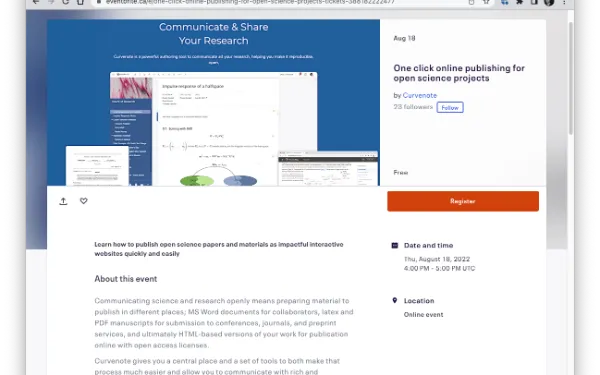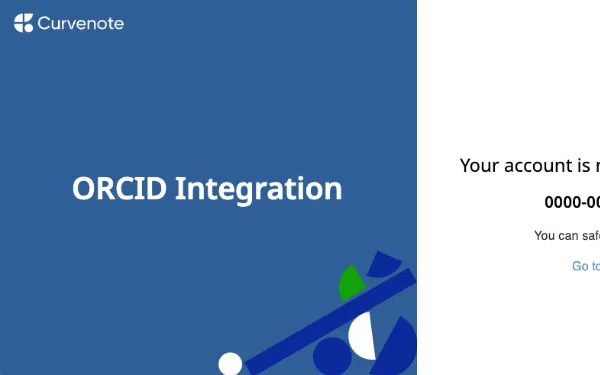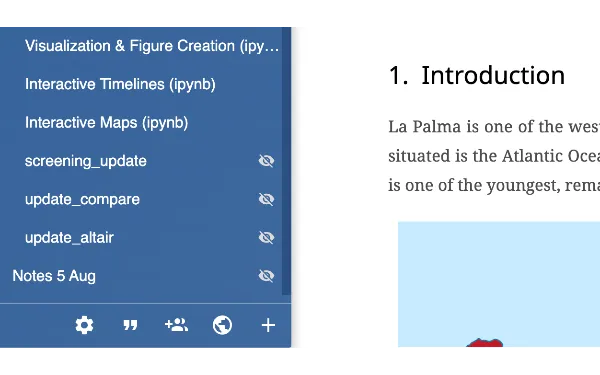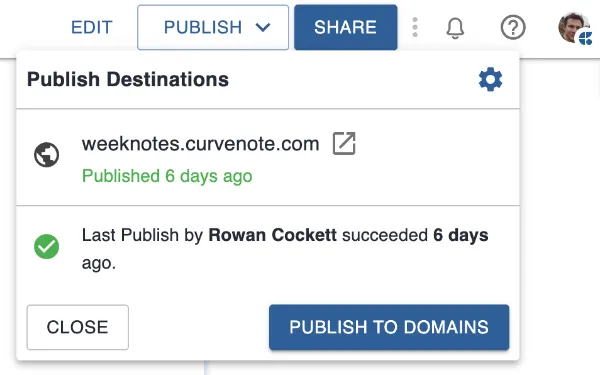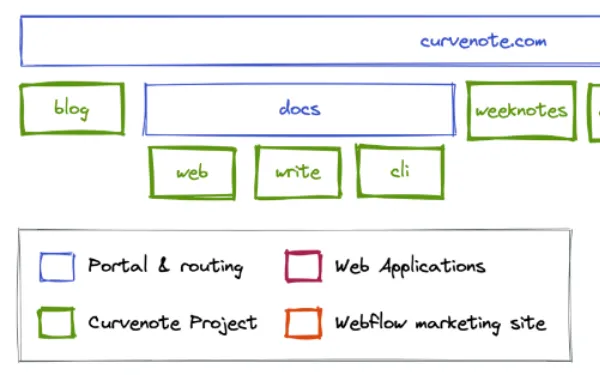Tables, Cross-References & Citations
Week of June 28, 2021
This week we released updates to tables, citation management, cross-references, and using Curvenote for writing papers and publishing with these new referencing features in mind. We will be making progress on bibtex import over the coming weeks as well as integrating with reference managers like Zotero.
Jun 24, 2021 Internal References¶
🔢 Numbering and Referencing internal content¶
- Equations and headings can now be numbered and can be referenced throughout your articles. You can use the
[[sec:and[[eq:to search through section headings and equations, respectively. You can see the numbering on the headers about and on the equation and figures. 🚀 🔢
You can now reference sections and equations as well as traditional citations: Cockett et al. (2018).
Figure 1:Internal references to sections and figure numbers.
You can also reference figures, for example, Figure 1 above! Try clicking it, and you can see what it refers to.
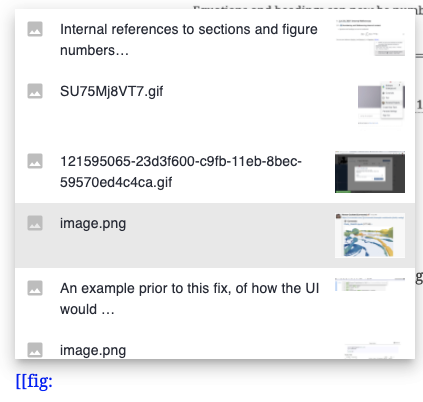
Figure 2:Image previews for figures are inline when you start to reference the content.
📝 Editor changes¶
- The suggestions now trigger in more situations (after punctuation, emojis, or on an internal break).
- The suggestion panel is better placed when it is above the suggestion area
- Images, code-blocks, equations and headers now have IDs.
- Only show the header actions if the whole header is selected, it will also show up when you start typing the header as well.
- We also removed a bug that happened when two different headers were selected, where the inline action prompt would show up for the first one - now nothing shows up in this situation. 🧙
- Another bug was fixed where if you created a new block while a header was selected, the app would error.
- The link search is now only filtered when you type
:, for example,[[fig:which searches figure references. - The labels that were on headers and figures (🏷️) have been removed for now. This means output will be through an ID system for now (which is a bit less readable).
- The figure caption is now no longer the same width as the image for small images.
💌 Quality of Life¶
- The circular progress on forms is now (again) contained to the line-height.
- Forms do not resize the height of the screen when there is a new form status or on successful completion.
- There was a problem publishing citations - the visibility of those was not included in what was published, meaning users couldn’t see the citation. This has been fixed.
- Clear preview was added in View mode, and the style issues of overlap were fixed!
- We have added a clear preview of a block when viewing the content, previously this was only available in edit mode.
